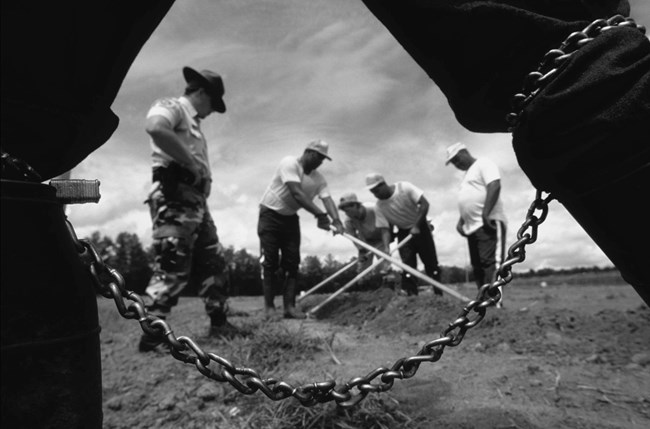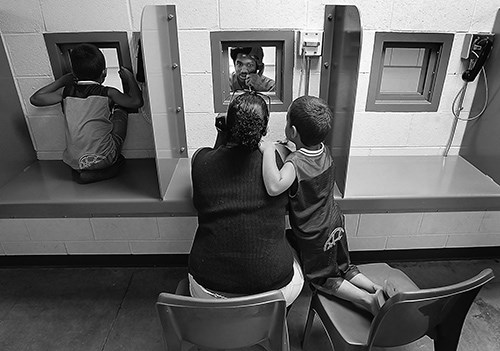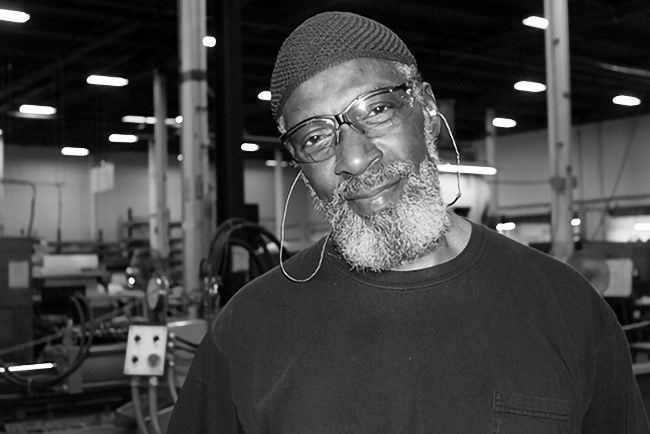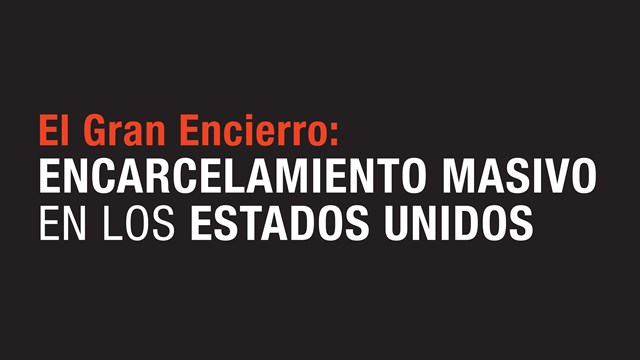
On Alcatraz Island, visitors learn its history and hear the voices of former residents. Yet the significance of Alcatraz also lies in its connection to historic and contemporary issues of criminal justice. The United States no longer has the highest rate of incarceration in the world. Since 2020, incarceration rates have surged in El Salvador, Cuba, Rwanda, and Tukmenistan. Still, the U.S. has historically high levels of incarceration with 1.9 million people currently behind bars. As you experience the Big Lockup, you will hear the stories of those incarcerated, see their loved ones, and sense the weight of incarceration. The exhibit uses archival and contemporary photographs to tell these stories, including interviews with those affected. The bold red, and shades of black incite reflection and draw the attention of visitors. Based on extensive research, this exhibit examines issues spanning from the Civil War until today. It reveals the forces that enabled mass incarceration to begin and persist. 
Major Theme AreasWorld’s Largest Prison SystemThe center piece of the room is a map of the world with black globes of various sizes representing the number of people incarcerated in the perspective countries. Additional panels compare data across the globe, by state, and type of correctional facility. How Did We Get Here?This area highlights the impact that national and state “Tough on Crime” and “War on Drugs” policies had on increasing prison populations from 1960s up to today. It starts to show the disproportionate impact on communities of color, particularly black communities. The 13th Amendment and its connection between slavery, Jim Crow laws, and incarceration are examined. Contemporary statistics comparing how white and people of color are treated in the criminal justice process are provided and related to protections against government abuse of power provided by the Bill of Rights. 
Who Is Incarcerated?In this section, text and pie graphs display the percentages of incarcerated people by conviction type and status. A flip book provides deeper analysis of who goes to prison/jail and the disproportionate impact of:
Who Is Harmed?Here we look at the impact of high incarceration rates on women, children, families, and whole communities. Details are provided on the struggles people have once released, and the restrictions placed on them that inhibit re-entry into society. Several individuals with conviction histories are profiled. Who Bears The Costs?These exhibits show annual criminal justice expenditures and their cost to society. The financial exploitation of people behind bars is also illustrated. 
How Can We Do Better?This section presents poll data of Americans that shows support for criminal justice reform. Visitors are asked their opinions of various aspects of the justice system and to imagine how we could prevent people from entering the criminal justice system in the first place. Profiles are provided of people that have successfully re-entered society after serving time in prison. Model deterrence, re-entry, and anti-recidivism programs are highlighted. What Is Going On Now?An updated video display shows a collection of recent stories in the news that discuss mass incarceration and reforms to the criminal justice system. CreditsCitations for all exhibit statistics enable visitors to locate the information and/or data presented. A full list of The Big Lockup’s exhibit resources is available. Also featured is a list of project collaborators and participants. Featured MediaMass Incarceration, VisualizedBruce Western explains the current inevitability of prison for certain demographics. Included with written from The Atlantic.The Enduring Myth of Black CriminalityTa-Nehisi Coates explores how mass incarceration has affected African American families. Included with permission from The Atlantic.Hope House, Washington D.C.Hope House Interview with Child of Incarcerated Person Washington D.C. Included with permission from Hope House.Unlimited ProductionsUnlimited Productions Interviews people who have criminal histories about their life and experiences. Produced in partnership with the National Park Service.The Ear Hustle PodcastProduced in San Quentin State Prison, people who are incarcerated tell their stories. Included with permission from Ear Hustle.Photo GalleryTranslations |
Last updated: November 25, 2025


